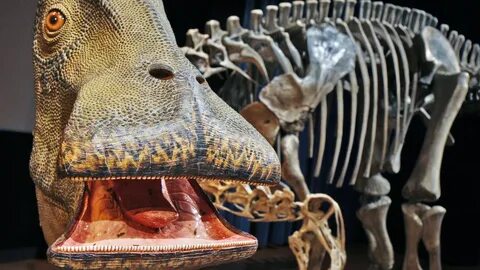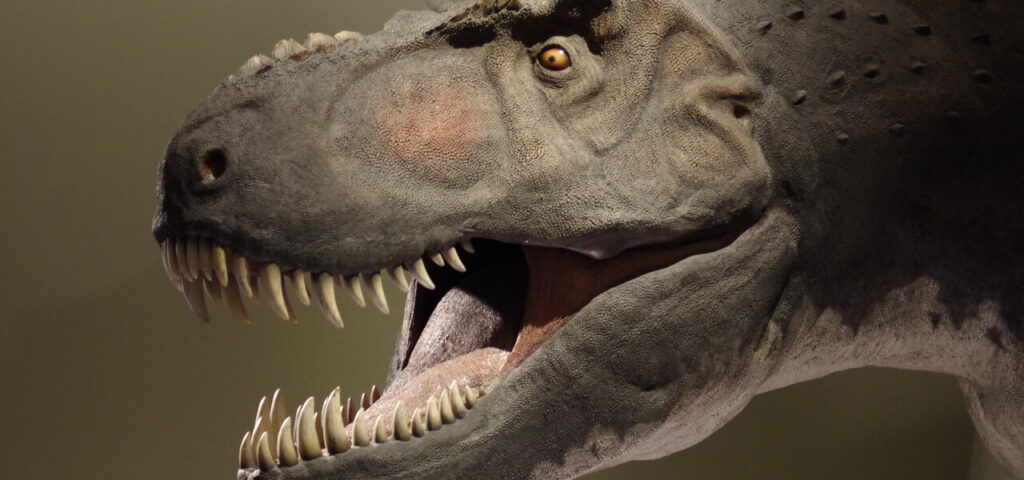Dinosaurs have always captured the imagination of people, especially when it comes to their unique characteristics. One question that often pops up is: “What dinosaur has 500 teeth?” The answer to this intriguing question leads us to a lesser-known but fascinating dinosaur named Nigersaurus. This dinosaur, with its impressive set of teeth, has gained attention not only for its dental structure but also for its distinctive features and lifestyle.
Nigersaurus: The Dinosaur with 500 Teeth
The Nigersaurus is the dinosaur known for having 500 teeth. This fascinating dinosaur belonged to the sauropod family, which is characterized by large, long-necked herbivorous dinosaurs. The Nigersaurus lived approximately 110 million years ago during the middle Cretaceous period. It was first discovered in the Republic of Niger, Africa, in the 1990s, and its name is derived from the country where it was found.
Unique Dental Structure
What makes the Nigersaurus truly remarkable is its dental structure. Unlike most dinosaurs, the Nigersaurus had a wide, flat mouth filled with approximately 500 teeth. These teeth were arranged in a manner that allowed the dinosaur to graze plants efficiently. The Nigersaurus had a specialized feeding mechanism, which involved constantly replacing its teeth throughout its life. This continuous replacement ensured that the dinosaur always had sharp, efficient teeth for feeding.
The teeth of the Nigersaurus were arranged in rows along the front of its mouth. This arrangement allowed the dinosaur to shear through vegetation quickly and effectively. The 500 teeth were designed for grazing, making the Nigersaurus one of the most efficient herbivores of its time.
Nigersaurus’ Lifestyle and Habitat
The Nigersaurus, with its 500 teeth, was a herbivore that primarily fed on low-lying plants. Its wide mouth and teeth structure suggest that it grazed on ferns, horsetails, and other soft plants that were abundant in its habitat. The dinosaur’s diet likely consisted of plants that grew close to the ground, as its neck was not as long as some other sauropods, such as the Brachiosaurus.
Environment and Living Conditions
The environment in which the Nigersaurus lived was lush and rich in vegetation, providing ample food for herbivores like itself. The Nigersaurus roamed the floodplains of what is now Niger, a region that was much wetter and more fertile during the Cretaceous period. This habitat supported a diverse range of plant life, making it an ideal feeding ground for the Nigersaurus.
Social Behavior
While not much is known about the social behavior of the Nigersaurus, it is believed that, like other sauropods, it may have lived in herds. Herding behavior would have provided protection against predators and allowed for more efficient feeding. The presence of 500 teeth would have given the Nigersaurus an advantage in grazing, enabling it to consume large quantities of plants quickly.
Discovery and Research
The discovery of the Nigersaurus and its 500 teeth has been a significant milestone in paleontology. The first fossils of the Nigersaurus were found in the Elrhaz Formation in Niger by a team of paleontologists led by Philippe Taquet in the 1970s. However, it wasn’t until the 1990s that more complete remains were uncovered by Paul Sereno and his team, leading to a better understanding of this unique dinosaur.
Importance of the Discovery
The discovery of the Nigersaurus provided valuable insights into the diversity of sauropods and their adaptations. The 500 teeth of the Nigersaurus were particularly interesting to scientists because they represented a unique adaptation among dinosaurs. The specialized teeth and feeding mechanism of the Nigersaurus showed how some dinosaurs evolved to exploit specific ecological niches.
Ongoing Research
Research on the Nigersaurus and its 500 teeth continues as paleontologists study its fossils to learn more about its lifestyle, behavior, and evolutionary history. The Nigersaurus has also sparked interest in understanding how other dinosaurs with similar dental structures may have lived and fed.
Comparing Nigersaurus to Other Dinosaurs
The Nigersaurus, with its 500 teeth, stands out among dinosaurs for its unique dental structure. However, it is not the only dinosaur with specialized teeth. Other dinosaurs, such as the Hadrosaurus and Triceratops, also had distinctive dental adaptations that suited their diets and lifestyles.

Hadrosaurus
The Hadrosaurus, also known as the “duck-billed dinosaur,” had a dental structure that allowed it to grind tough plant material. Unlike the Nigersaurus, which had teeth designed for shearing, the Hadrosaurus had flat teeth that were ideal for grinding. This difference in dental structure highlights the diversity of feeding strategies among herbivorous dinosaurs.
Triceratops
The Triceratops, a well-known herbivorous dinosaur, had a different dental structure compared to the Nigersaurus. The Triceratops had sharp, pointed teeth that were used to cut through tough vegetation. While the Triceratops had fewer teeth than the Nigersaurus, its teeth were well-suited for its diet of fibrous plants.
Unique Adaptations
The Nigersaurus’ 500 teeth are a testament to the incredible adaptability of dinosaurs. Each species developed unique features to survive and thrive in their environments. The Nigersaurus, with its specialized teeth, was perfectly equipped to feed on the vegetation in its habitat, making it a successful herbivore of its time.
The Legacy of the Nigersaurus
The Nigersaurus, often referred to as the dinosaur with 500 teeth, has left a lasting legacy in the field of paleontology. Its discovery has deepened our understanding of dinosaur diversity and evolution. The unique dental structure of the Nigersaurus serves as a reminder of the incredible variety of life that once existed on Earth.
Impact on Paleontology
The study of the Nigersaurus has had a significant impact on paleontology, particularly in the study of sauropods. The discovery of its 500 teeth has led to new theories about how dinosaurs fed and interacted with their environments. The Nigersaurus has become an important subject of study for paleontologists seeking to understand the complexities of dinosaur life.
Fascination with Dinosaurs
The Nigersaurus continues to captivate the public’s imagination, especially with the question of “what dinosaur has 500 teeth?” Its unique features and the story of its discovery have made it a popular topic in discussions about dinosaurs. The Nigersaurus serves as a reminder of the mysteries that still exist in the world of paleontology and the importance of continuing research and exploration.
Conclusion
The Nigersaurus is the answer to the intriguing question, “what dinosaur has 500 teeth?” This unique dinosaur, with its remarkable dental structure, has provided valuable insights into the world of dinosaurs and their adaptations. The Nigersaurus’ 500 teeth were perfectly suited for its herbivorous diet, making it a successful and fascinating species of its time.
The legacy of the Nigersaurus lives on as researchers continue to study its fossils and learn more about its life and environment. As we uncover more about this dinosaur and others like it, the Nigersaurus will remain a symbol of the incredible diversity and adaptability of life on Earth millions of years ago.



